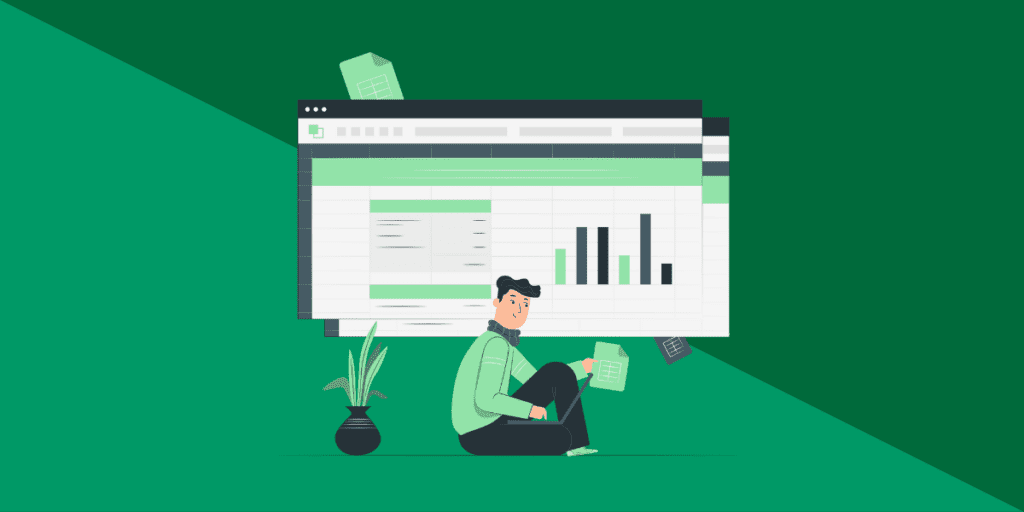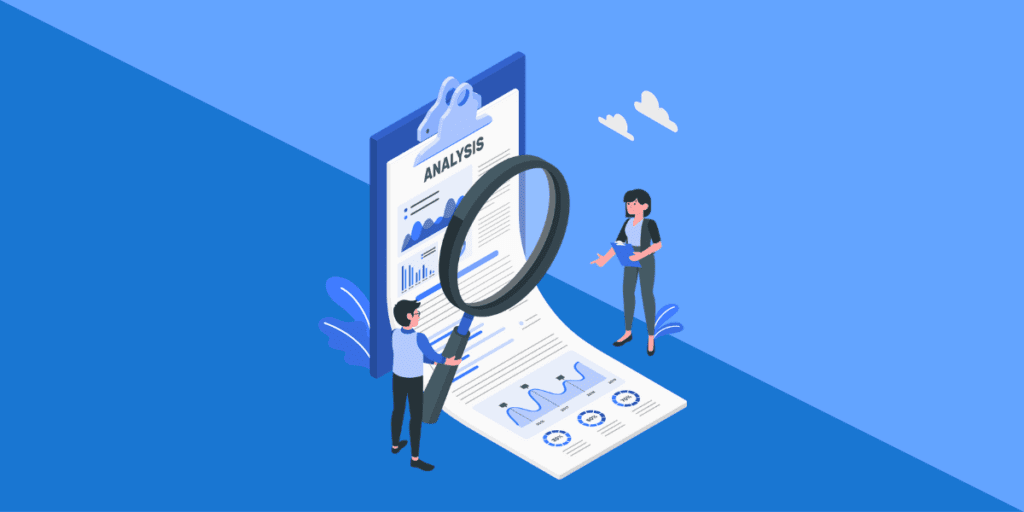Note: this cheat sheet is updated for the latest 2025’s curriculum.
Although a relatively small topic weight, CFA Level 1 Corporate Issuers is one of those topics that is highly interlinked with Financial Statement Analysis and Quantitative Methods, therefore mastering this relatively light topic should pay dividends (sorry) for your overall exam.
To help you with your revision, we decided to create our Cheat Sheet series of articles, which focuses on one specific topic area for each CFA Level. ☕
More Cheat Sheets will be published in the coming weeks, sign up to our member’s list to be notified first.
By referring to the CFA Learning Outcome Statements (LOS), we prioritize and highlight the absolute key concepts and formula you need to know for each topic. With some tips at the end too!
Use the Cheat Sheets during your practice sessions to refresh your memory on important concepts.
Let’s go – don’t forget to bookmark and come back to this often! 🙂
- CFA Level 1 Corporate Issuers: An Overview
- LM1: Organizational Forms, Corporate Issuer Features and Ownership
- LM2: Investors and Other Stakeholders
- LM3: Corporate Governance: Conflicts, Mechanisms, Risks, and Benefits
- LM4: Working Capital and Liquidity
- LM5: Capital Investments and Capital Allocation
- LM6: Capital Structure
- LM7: Business Models
- CFA Level 1 Corporate Issuers Tips
CFA Level 1 Corporate Issuers: An Overview

Corporate Issuers is a central topic across all Level 1 and 2 of the CFA exams, and drops off in Level 3. Its relatively low topic weighting is deceptive, given how integrated corporate finance concepts are in finance.
In Level 2, Corporate Issuers repeats and tests a lot of the same fundamental concepts, so if you can gain a solid understanding in Level 1, it will save you time and agony when you are studying for Level 2. Kind of like Ethics where mastering it earlier generates a high return in investment for future levels.
CFA Level 1 Corporate Issuer’s topic weighting is 6%-9%, which means 11-16 questions of the 180 questions of CFA Level 1 exam is centered around this topic.
It is covered in Topic 4 which contains 7 Learning Modules (LMs).
Here’s a summary of CFA Corporate Issuers chapter readings:
The topic of Corporate Issuers is a relatively interesting reading and I find it does provide some ‘real life’ practicality compared to other study sessions. It teaches a very big picture overview of the fundamentals a company will use to evaluate their investing and or financing decisions.
In essence, the CFA Level 1 Corporate Issuers topics teaches you:
– practical fundamentals of finance, e.g. net present value (NPV) concept;
– how to decide which investments to make.
– why working capital management is important.
LM1: Organizational Forms, Corporate Issuer Features and Ownership

Business structures
| Sole Trader | General Partnership | Limited Partnership | Corporation (Limited Companies) |
|---|---|---|---|
| Extension of owner | Set by partnership agreement | Set by partnership agreement | Legal identity is separated from owners |
| Owner operated | Partner operated | Operated by GP | Operated by management team voted by shareholders |
| Owner has unlimited liability | Partners share unlimited liability | GP has unlimited liability, LPs have limited liability | Limited business liability for shareholders |
| Business profits taxed as personal income | Business profits shared & taxed as personal income | Business profits shared & taxed as personal income | Business profits are taxed twice (double taxation): corporation and dividend tax |
| Owner’s risk appetite and capital constrains business growth | Partners’ risk appetite and capital constrains business growth | GP’s ability, partners’ risk appetite and capital constrains business growth | Financed with equity and debt |
Public and Private Corporations
Private company can go public via:
- IPO
- Direct Listing
- Acquisition either when a private company is acquired by a larger public company, or via a Special Purpose Acquisition Company (SPAC)
Public companies can go private via:
- Leveraged buyout (LBO)
- Management buyout (MBO)
LM2: Investors and Other Stakeholders
Risk-return profile of equity vs debt
| Investor’s perspective | Equity | Debt |
|---|---|---|
| Return potential | Unlimited | Limited to interest and principal payments |
| Maximum loss | Initial investment | Initial investment |
| Investment risk | Higher | Lower |
| Investment interest | Maximize company value (net assets less liabilities) | Timely repayment |
LM3: Corporate Governance: Conflicts, Mechanisms, Risks, and Benefits

Factors relevant to corporate governance and stakeholder management analysis
- Economic ownership and voting control: e.g. dual class structures, power to elect board members.
- Board of directors representation: assess whether the current skillset, expertise and diversity in board of directors meet the current and future needs of the firm.
- Remuneration and company performance: analysts must check if the executive remuneration are aligned with performance of the company.
- Investors in the company: examine the investor structure for cross shareholdings, affiliated stakeholders and activist shareholders.
- Strength of shareholder rights: analysts need to assess the strength of shareholders’ rights vs other comparable companies
- Managing long-term risks: analysts need to form a view of management quality and their ability to manage long-term risks to the firm.
LM4: Working Capital and Liquidity

Some liquidity ratios
Cash conversion cycle = Days of inventory on hand (DOH) + Days Sales Outstanding (DSO) – Days Payable Outstanding (DPO)
EAR \space of \space supplier \space financing= \bigg[\bigg(1+\frac{d}{1-d}\bigg)^{\frac{365}{Payment \space period-Discount \space period}}\bigg]-1Total working capital = current assets – current liabilities
Free cash flow = Cash flow from operations – Investments in long-term assets
Current \space ratio=\frac{Current \space assets}{Current \space liabilities}Quick \space ratio=\frac{Cash+Short \space term \space marketable \space instruments + Receivables}{Current \space liabilities}Cash \space ratio=\frac{Cash+Short \space term \space marketable \space instruments}{Current \space liabilities}Managing and measuring liquidity
| Primary sources of liquidity | Secondary sources of liquidity |
|---|---|
| Cash (bank accounts) | Negotiating debt contracts |
| Short term funds (lines of credit) | Liquidating assets |
| Cash flow management | Filing for bankruptcy |
Drags on liquidity means delayed/reduced cash inflows, e.g. bad debt, late/uncollected receivable payments.
Pulls on liquidity means accelerated cash outflows, e.g. earlier debt repayment.
Evaluating short term financing choices
Objectives of short-term borowing strategies:
- Ensure sufficient capacity to handle peak cash needs
- Maintain sufficient sources of credit
- Borrow at cost effective rates
Factors influencing a company’s short-term borrowing strategies:
- Sizes and creditworthiness
- Legal and regulatory considerations
- Sufficient access
- Flexibility of borrowing options
LM5: Capital Investments and Capital Allocation

Basic principles of capital allocation
- Decisions are based on cash flows, not accounting concepts. Include incremental after-tax cash flows, (positive/negative) externalities. Exclude sunk cost because it is already incurred.
- Cash flows are not accounting net income or operating income.
- Cash flows must account for opportunity cost.
- Cash flows must be on an after-tax basis.
- Timing of cash flows is vital.
- Ignore financing costs, as it is already included in cost of capital.
Net present value (NPV)
NPV=\displaystyle \sum_{t=1}^n \frac{CF_t}{(1+R)^t} - Initial \space outlay- For independent projects:
- If NPV > 0, accept project;
- If NPV < 0, reject project.
- For mutually exclusive projects: accept the project with the highest (positive) NPV.
Internal rate of return (IRR)
IRR is the discount rate (r) such that NPV is 0.
- For independent projects:
- If IRR > required rate of return, accept project;
- If IRR < required rate of return, reject project.
- For mutually exclusive projects:
- accept the project with the higher IRR, as long as IRR > required rate of return.
- use the NPV rule if NPV and IRR rules conflict.
NPV vs IRR methods: Pros and Cons
| NPV method | IRR method |
|---|---|
| Pros: It’s a direct measure of value uplift in the firm. | Pros: It shows the return on each $ invested, and allows a direct comparison with the required rate of return. |
| Cons: It doesn’t consider project size. | Cons: It may conflict with NPV analysis, or have multiple IRRs or no IRR for projects with unconventional cash flows. It also incorrectly assumes that intermediate cash flows are reinvested at IRR rate. |
Return on Invested Capital (ROIC)
ROIC=\frac{After \space tax \space net \space profit}{Average \space book \space value \space of \space invested \space capital}Real options
| Timing options | Option to delay investments until more information is received. |
| Sizing options | Option to expand, grow or abandon as the project progresses. |
| Flexibility options | Option to alter operations once investment is made, such as changing prices, or increasing production. |
| Fundamental options | Option to alter investment decision based on future events. |
Project \space NPV (w \space option)= Project \space NPV \space (w/o \space option) - Option \space cost + Option \space value
Common capital allocation pitfalls
- Failure to include economic responses
- Misusing capital budgeting templates
- Pet projects
- Basing investment decisions on earning metrics (EPS, net income or ROE), instead of incremental cash flows
- Using IRR to make investment decisions, instead of NPV
- Poor accounting of cash flows
- Over or underestimating overhead costs
- Misestimating discount rate
- Spending all of the investment budget just because it is available
- Failure to consider investment alternatives
- Improper handling of sunk cost and opportunity costs
LM6: Capital Structure

Weighted average cost of capital (WACC)
WACC is the cost of each component of capital (debt, preferred stock and common equity) in the proportion they are used in a company.
WACC = wdrd (1-t) + wprp + were
Modigliani-Miller (MM) Propositions
MM Proposition 1 (without taxes)
This proposition states that the market value of a company is not affected by its capital structure, assuming:
- Investors have homogenous expectations
- Perfect capital markets
- No agency cost
- Investors can borrow and lend at risk free rate
- Financing and investment decisions are independent
This means that value of the levered firm (VL) equals the value of unlevered firm (VU).
V_L=V_U
MM Proposition 2 (without tax)
This proposition states that cost of equity increases with debt-to-equity ratio (financial leverage).
r_e=r_0+(r_0-r_d)\frac{D}{E}where re= cost of equity, r0= cost of capital of company financed only with equity and no debt, rd= cost of debt, D/E = debt to equity ratio.
As leverage increases, cost of equity increases but not cost of debt or WACC.
MM Proposition 1 (with Taxes)
With taxes included, this proposition states that the value of a levered company equals the value of unlevered company plus value of debt tax shield.
V_L=V_U+tD
MM Proposition 2 (with Taxes)
With taxes included, this proposition states that cost of equity increases with debt-to-equity ratio (financial leverage), with an adjustment for tax rate.
r_e=r_0+(r_0-r_d)(1-t)\frac{D}{E}The cost of equity increases as leverage increases, but not as quickly compared to the case without taxes. Cost of debt remains constant.
Thus, WACC reduces as firm increases leverage, increasing the value of the firm.
LM7: Business Models

An easy, statement-based chapter to read, no notes needed from us! 😀
CFA Level 1 Corporate Issuers Tips

- Practice using your calculator
- In comparison to some of the more difficult study sessions such as Derivatives, or subjective sessions like Ethics – Corporate Issuers should be a relatively easy section to pick-up some points and time on exam day.
- There are not a lot of ways a calculation question can be modified for this section, so if you have a solid understanding of the fundamentals – you should be set.
- Practice using your calculator and get familiar with how to solve for various NPV questions as that is guaranteed to show up and be tested.
- Check out our BA II Plus guide or HP 12C calculator guide for relatively unknown tips and techniques when using your CFA calculator.
- Lots of formulae, but don’t just memorize
- Although this section at first glance may appear to be heavily formula based, do not skim over the basic theoretical concepts that the LOS mentions.
- These can often be where the CFA Institute tries to deliver a trickier question versus a typical punch and crunch calculation.
- A helpful tip that I find is to go through the LOS one by one and hand-write all the formulas that are described as “calculate” or “evaluate” as this will give you an overview of things you can quickly start to memorize, without getting lost in all the detail.
More Cheat Sheet articles will be published and updated continuously. Get ahead of other CFA candidates by signing up to our member’s list to get notified.
Meanwhile, here are other related articles that may be of interest:
- CFA Level 1 Cheat Sheets series: Quant Methods | Economics | FSA | Derivatives | Fixed Income | Equity Investments | Ethics | Alt Investments | Portfolio Management
- CFA Level 1: How to Prepare and Pass CFA in 18 Months
- CFA Level 1 Tips: Top 10 Advice from Previous Candidates
- 18 Actionable Ways to Improve Your Study Memory
- How to Study Effectively: Proven Methods that Work for CFA, FRM and CAIA
- The Ultimate Guide to CFA Practice Questions

Maybe static trade-off theory should be added to the summary 🙂
DFL formula should be P-V not F-V
Thanks for spotting that shivani! corrected 😉